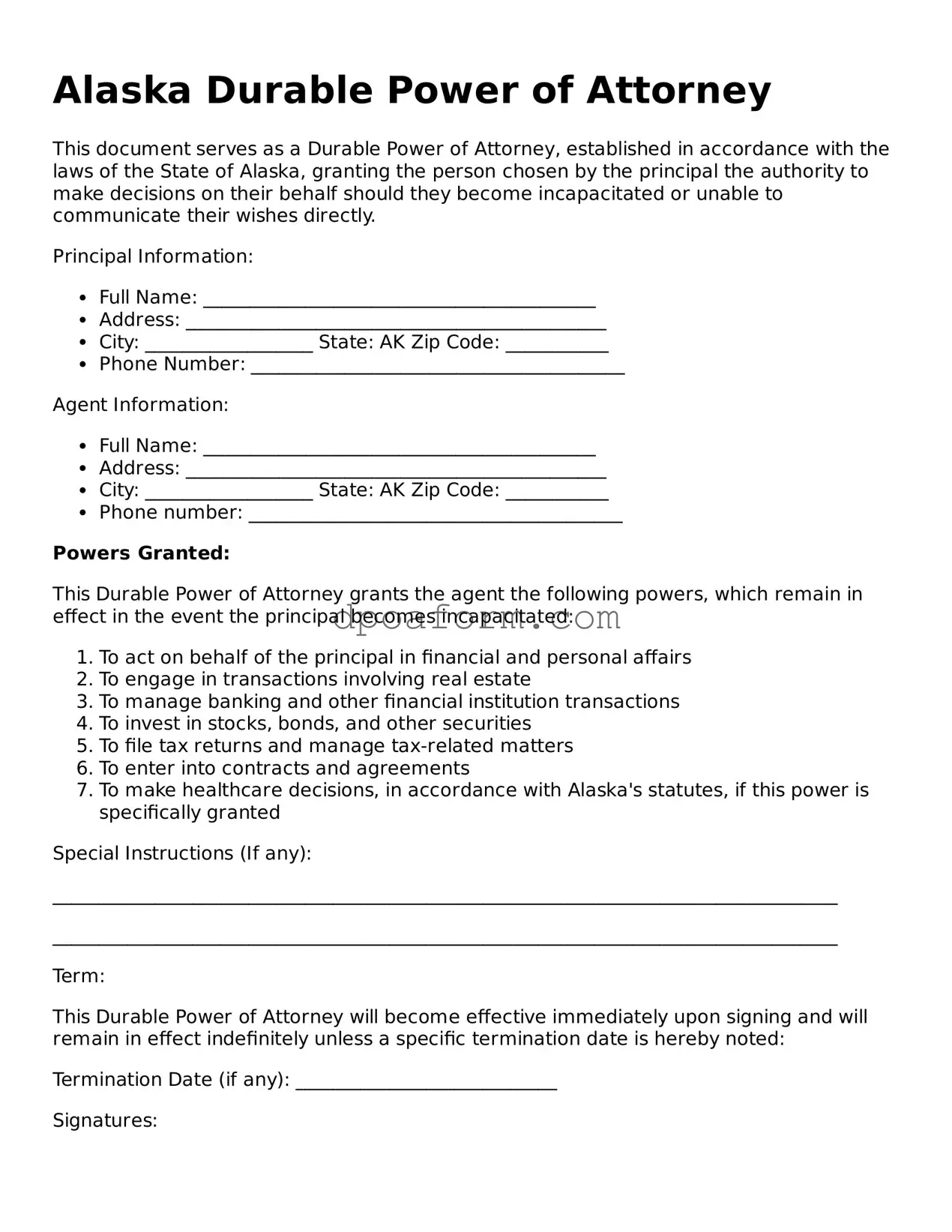Alaska Durable Power of Attorney: Usage Steps
Filling out a Durable Power of Attorney (DPOA) form in Alaska is a proactive step in managing one's personal affairs. By completing this form, you're ensuring that your decisions about finances, property, and other important matters are in trusted hands should you become unable to manage them yourself. This task requires attention to detail and understanding the implications of the powers you are granting. Here are the steps to take when filling out the Alaska Durable Power of Attorney form, aimed at making the process straightforward.
- Begin by reading the entire form carefully to ensure you understand the scope and implications of granting a Durable Power of Attorney.
- In the section designated for the identification of the principal (the person granting the power), fill in your full legal name, Alaska address, and contact information.
- Identify the agent (the person you're granting the power to) by filling in their full name, address, and contact details. Ensure the agent is someone you trust implicitly.
- If you wish to appoint a successor agent (a backup, should the primary agent be unable or unwilling to serve), provide their full legal name, address, and contact information in the designated section.
- Specify the powers you are granting to your agent. Be as clear and precise as possible to avoid any confusion or misinterpretation in the future.
- If there are any specific limitations to the powers granted, or specific powers you do not wish your agent to have, clearly detail these in the provided section.
- Indicate the effective date of the power of attorney. If it is effective immediately, note this accordingly. If it will only come into effect upon your incapacitation, specify the conditions or manner in which incapacity is to be determined.
- Review the special instructions section to provide any additional guidance or limitations you feel are necessary for your agent to know. This might include preferences for managing certain assets, wishes regarding the sale of property, or other considerations.
- Sign and date the form in the presence of a notary public. In Alaska, your signature on the Durable Power of Attorney must be notarized to be legally binding.
- Finally, have the notary public fill in their section, which includes their signature and seal, to complete the notarization process.
After you have filled out the Durable Power of Attorney form, it's vital to communicate with the chosen agent about the responsibilities and powers you are entrusting them with. This enables a smoother transition and ensures that your affairs will be managed according to your wishes. Keep the original document in a safe place and provide copies to your agent, successor agent (if applicable), and possibly your attorney. Remember, you can revoke or change the Durable Power of Attorney at any time as long as you are competent.
